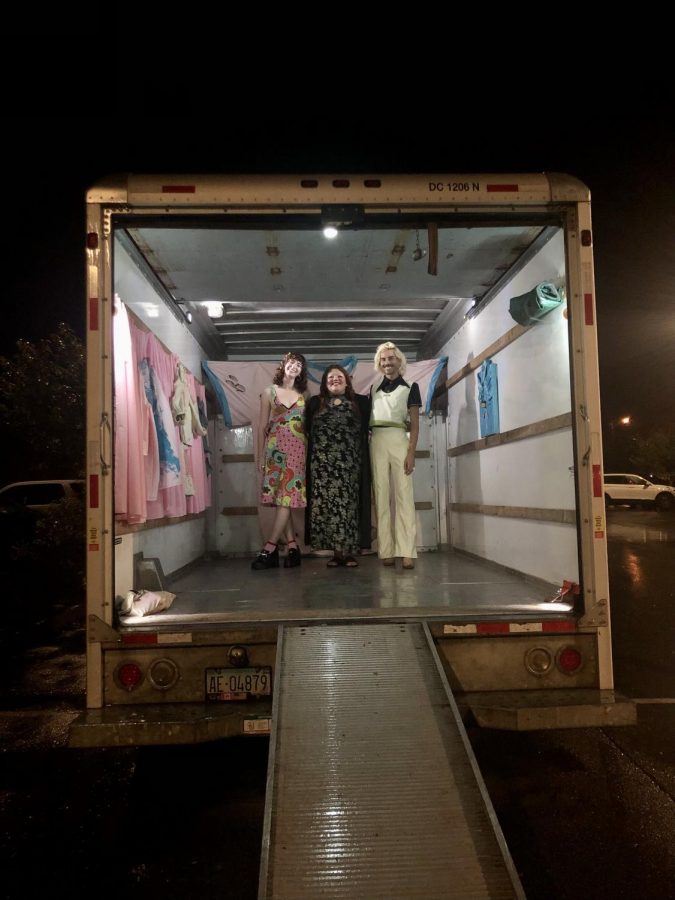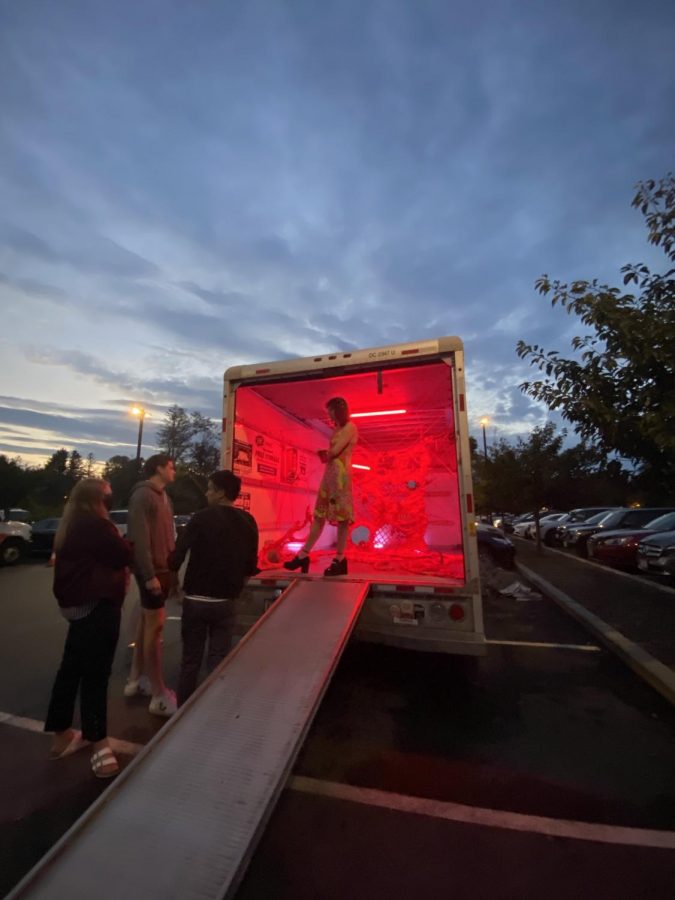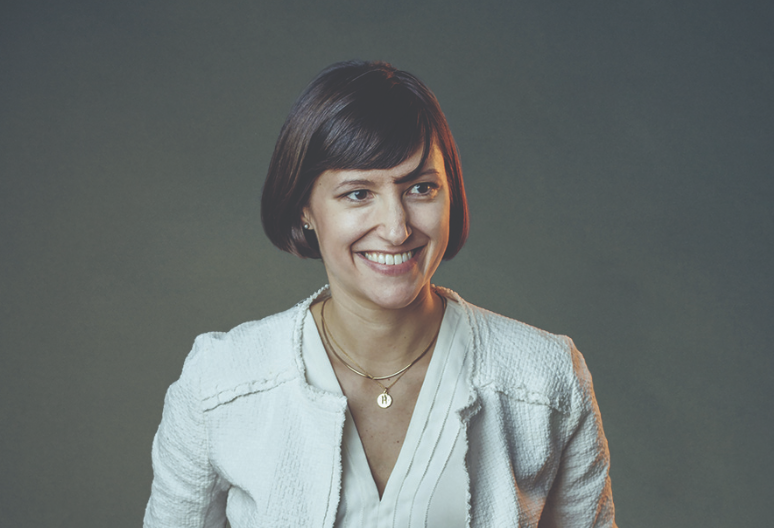‘charm bracelet’ exhibition celebrates young Latinx artists at Williams and beyond
October 27, 2021
After four years of Williamstown weekends, I’ve learned that beer cans and “Mr. Brightside” are all one can really expect from a night out on the town. Rarely does one amble down Spring Street on a Friday evening and encounter a full Mexican buffet, a bottle of Super RUSH nail polish remover, and Professor of Art Liz McGowan. If this sounds like a far-fetched fever dream, rest assured that I wasn’t hallucinating this tableaux. I was simply attending the gallery opening of charm bracelet, a multi-event experimental project curated by Isabel Kuh ’23 showcasing the work of emerging Latinx artists.
Kuh — an art history and studio and American studies major from Los Angeles — jumped straight into Professor of Art C. Ondine Chavoya’s 400-level course “Contemporary Exhibitions in Los Angeles and Latin America” during her first semester on campus. It was in this course that the idea for charm bracelet came about.
“I wrote about two female artists of color who subverted Susan Sontag’s articulations of camp through their practice,” Kuh told the Record. “The general idea [for charm bracelet] began as me wanting to look at camp and installation art and site specificity, and to do it in alternative settings.”
Sit down, Williams Outing Club — “camp,” as the term is used here, doesn’t mean the Appalachian Trail overnight you did over reading period. In fact, Sonta g, who defined the aesthetic in her seminal 1964 “Notes on Camp,” wrote that “nothing in nature can be campy.” Rather, camp is a sensibility defined by its commitment to artifice and exaggeration. “The hallmark of camp is the spirit of extravagance,” writes Sontag. In presenting “charm bracelet,” Kuh endeavored to spotlight artists for whom glamour, sensuality, and materiality are both modes of expression and political statements.
Like its eponymous jewelry, Kuh’s project, her first experience curating solo, is a whole comprising distinct parts. Oct. 14’s “charm” was a talk by Oscar Chavez and Gabriela Ruiz, two contemporary artists whom Kuh commissioned to make new site-specific installations in two U-Hauls parked across from Tunnel City Coffee.
Kuh had originally hoped to present this work in storefronts, but after running into challenges securing a space on Spring Street, she realized that U-Hauls would provide the flexibility needed for such an ephemeral installation — and increase its accessibility. “It allows anyone walking by to see what was happening inside, which I think is really important — I think art should be as accessible as possible,” Kuh said. “It’s very easy in a gallery to say, ‘Oh, I could never do that,’ but if you actually see someone creating this foam sculpture or what have you, you think, ‘Maybe I could attempt it.’”
At the talk, Chavez and Ruiz gave presentations on their work to ground the pieces they would present later that week in their past artistic practice. Chavez, who works and lives in Brooklyn, explores self-presentation through clothing, using visibly queer aesthetics to confront racism, capitalism, and heteronormativity. One work, Suit Jacket for Mid Pandemic Job Interviews, features the phrase: “I can’t believe I wasted my early 20s enjoying life and making art instead of gaining the 10+ years experience needed for a minimum wage job.” Ruiz shared images of her multimedia work, which often engages with found objects and insulating foam, and described memorable past performances, such as Empapada, a performance work where Ruiz doused herself in Fabuloso all-purpose cleaner.
On Oct. 15, the U-Hauls rattled open to reveal the next “charm” as disco music blared down Spring Street and students helped themselves to catered Tony’s Sombrero. Chavez’s U-Haul installation included the work Otra Noche Otra (Summer Sex), a crisply folded shirt adorned with joints and poppers, and I Deserve to be Fed, a massive shirt bedazzled with the words, “I’m not scared to bite the hand that feeds me.”
“The government sent me a letter over the summer claiming they had overpaid me for unemployment, and that I needed to pay them back,” Chavez said of the work. (Chavez did not pay them back, but sued for his money and won.)

In Ruiz’s U-Haul, insulating foam was sprayed into intricate cobwebs that held mirrors and flowers and draped over the floor of the U-Haul. Looking inside Ruiz’s installation felt like peering into beautiful entrails, or the ventricles of a tender heart. “My installations definitely go over the top,” Ruiz declared.
The two other “charms” are student art shows juried by the art department’s Class of 1960 Scholars, which features new work by Jessica De Los Santos ’22, Armanis Fuentes ’22, Javier Robelo ’22, Olivia Matters ’23, Amy Lemuz-Guerra ’24, and three artists from Bennington College. These works span linocut, bilingual poetry, and photography, and will be on view to the public in the lobby of Images Cinema through the end of October. Last Friday, WCFM, the College’s student-run radio station, co-hosted the final event of “charm bracelet,” a DJ set in the Perry Goat Room by electronic musician and music engineer Debit (The writer of this article is on the WCFM board, but did not help organize this event).
Kuh said she hopes that those who attended any part of charm bracelet walk away inspired by the work young Latinx artists are creating in the contemporary moment, both at Williams and elsewhere. “The Latinx community at home in Los Angeles is so vibrant, and I wanted to bring some of that energy to the Berkshires,” Kuh said.








